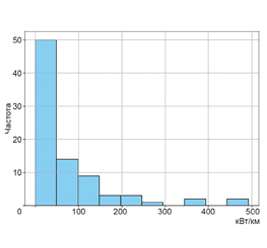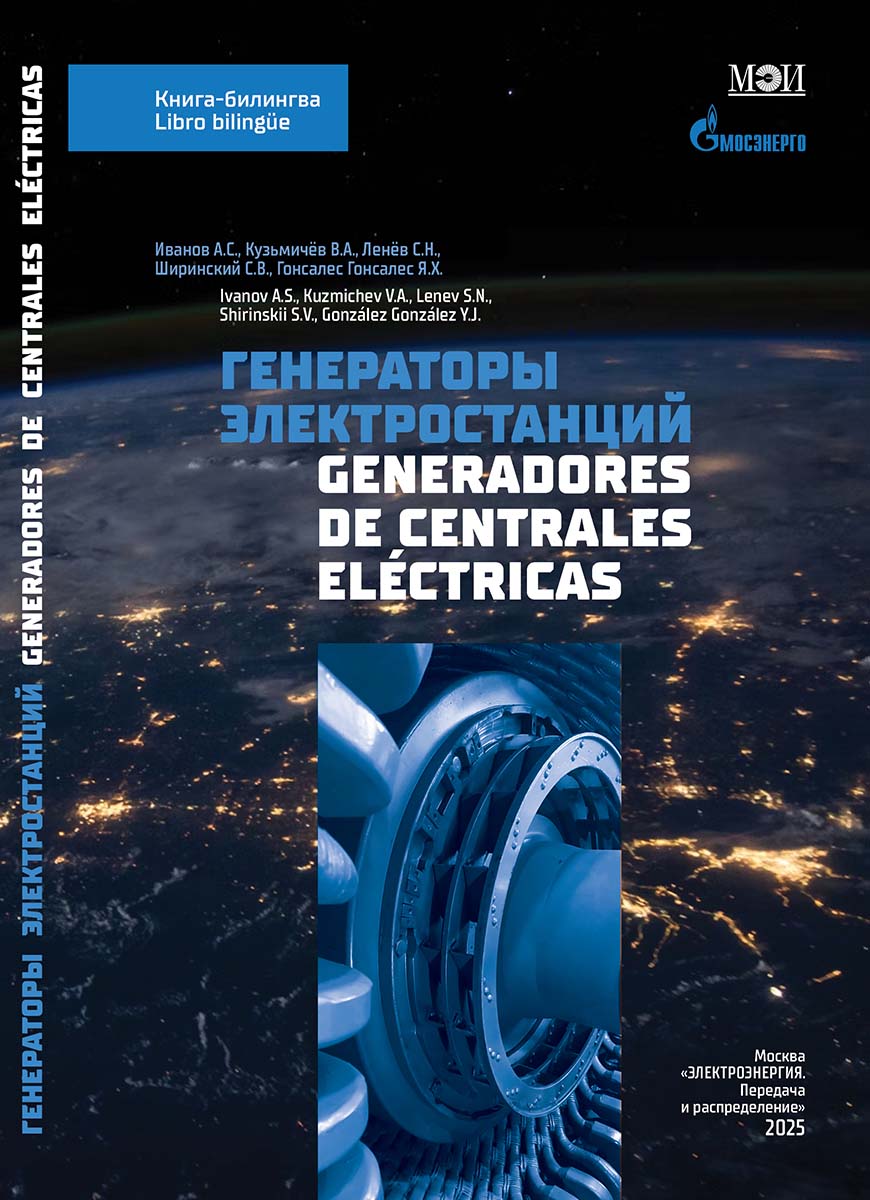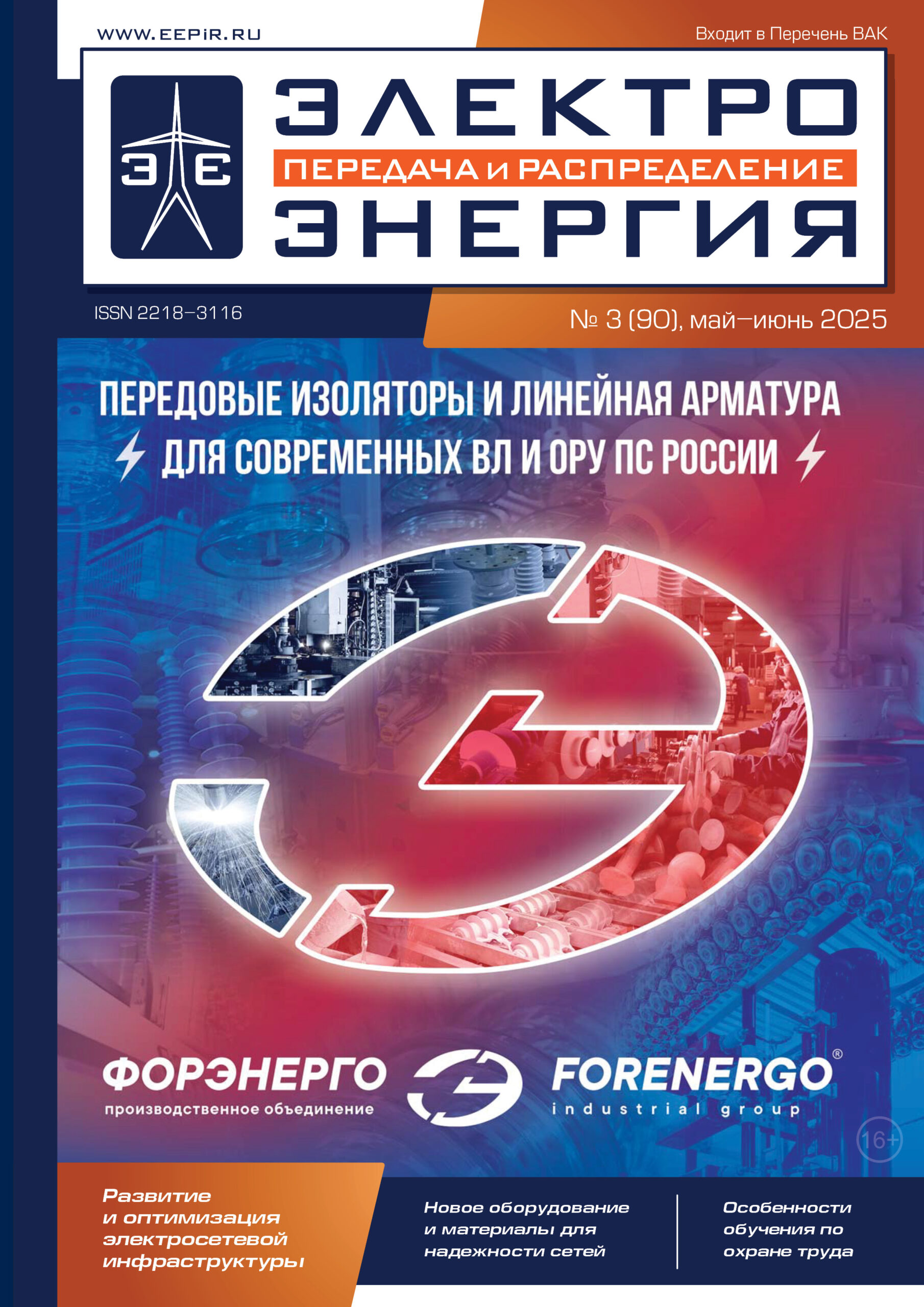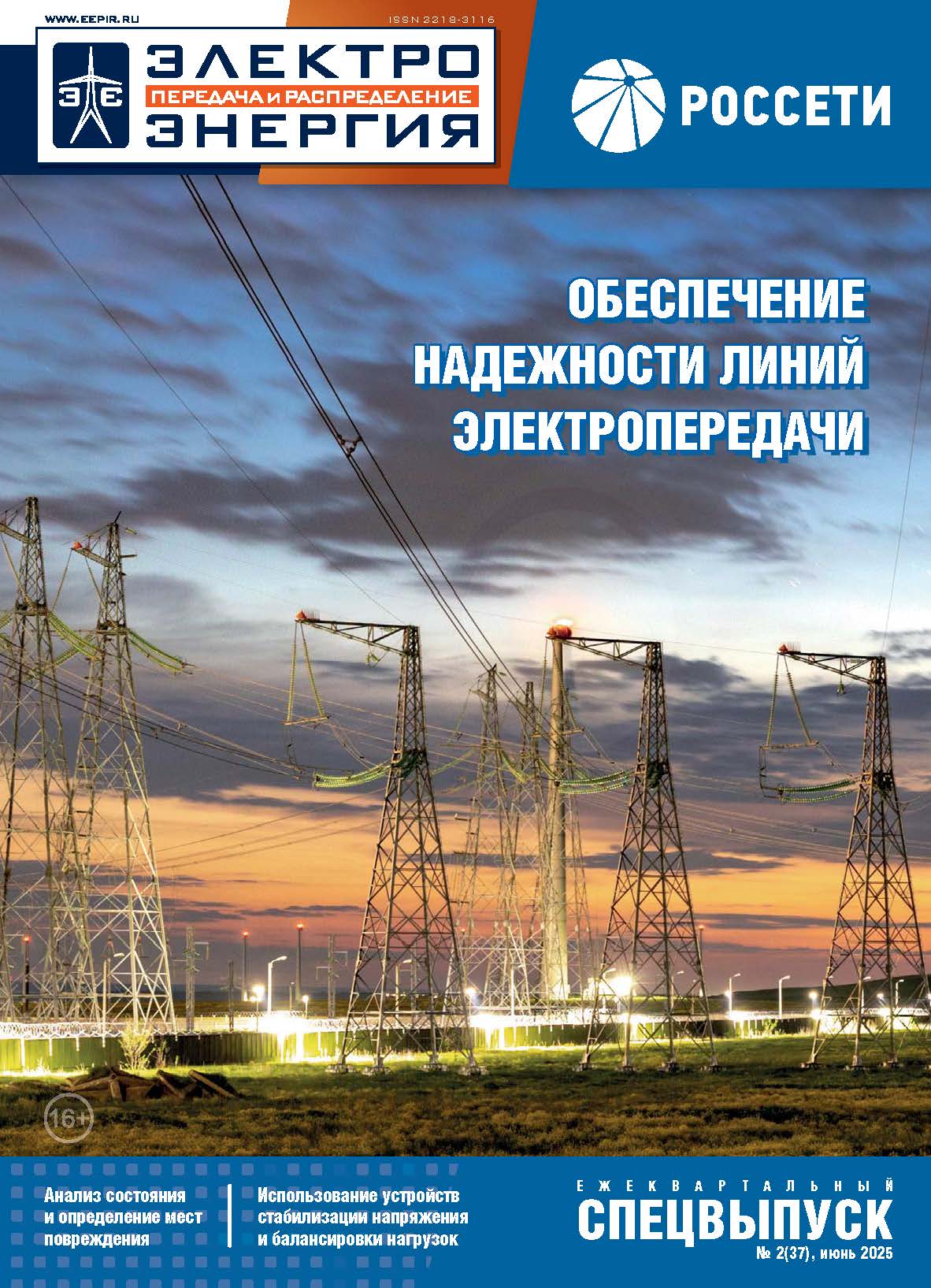
The MAIN JOURNAL for POWER GRID SPECIALISTS in RUSSIA
2014
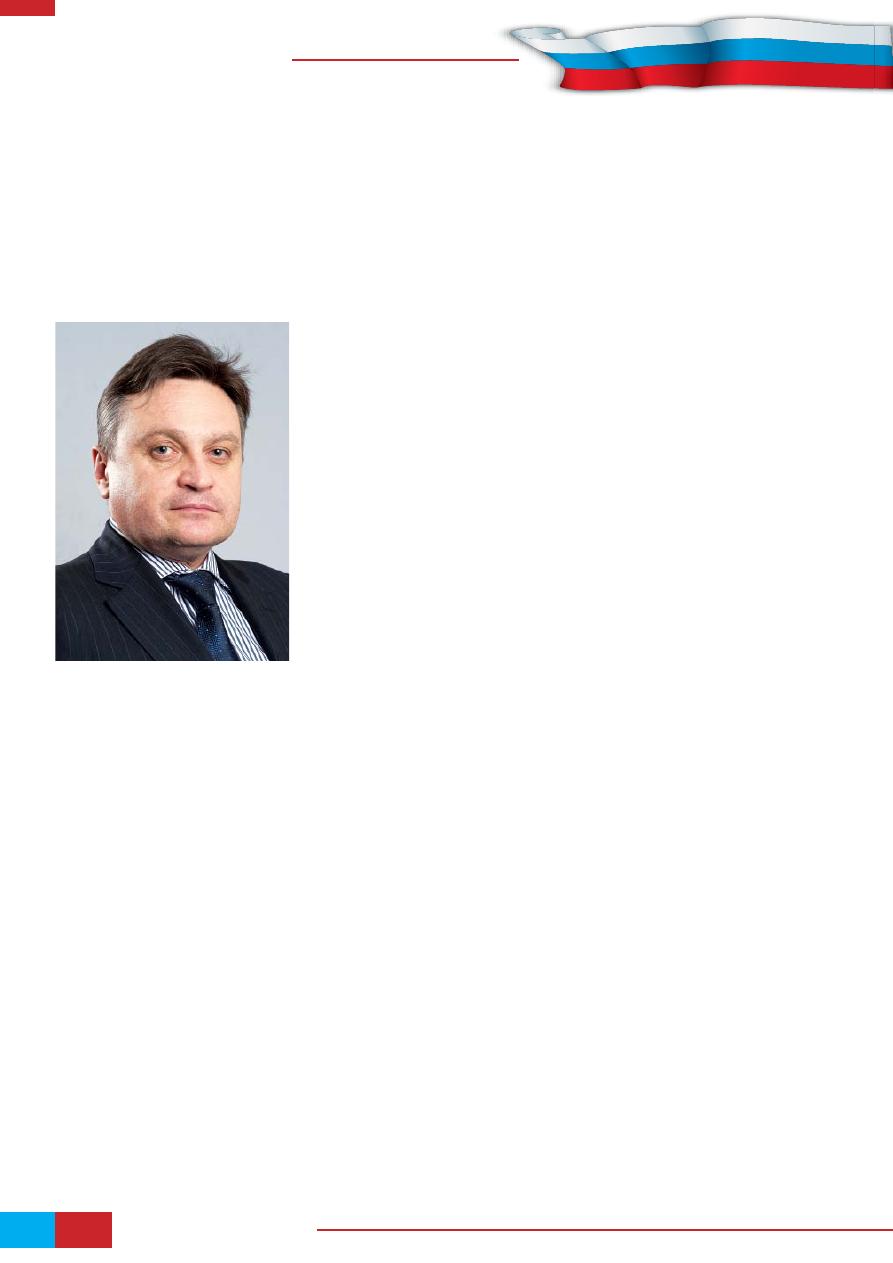
DIGEST, February, 2014
6
Multiagent technology — a new
approach to a common technological
infrastructure management
The development strategy for the Unified National Electric Grid
(UNEG) approved April 3, 2013, as one of the ways to ensure long-
term reliable, quality and affordable energy to consumers, involves
creation of a smart energy system with an active-adaptive electric
power grid — grid of new generation, customer-oriented and based
on multi-agent management principle of operation and development.
This approach seems reasonable in terms of the need for a unified
technical policy, availability, reliability, efficiency, viability and
sustainable development of power systems related to critical
infrastructures.
Andrei CHEREZOV (Андрей ЧЕРЕЗОВ),
Deputy Minister of Energy, the Russian Federation
Network management
WORLD EXPERIENCE
Wide development of digital communication and in-
formation technologies has made it possible to tighten
regulations for production ef
fi
ciency and transition to an
economy based on knowledge and high technologies. To-
day new requirements for adaptability of support infra-
structure are speci
fi
ed under changing conditions to main-
tain reliability of industries.
Conventional schemes for distributed infrastructure
management are built in a hierarchical manner. This ap-
proach, together with the development of process control
systems increases the number of elements of technologi-
cal systems, their dynamism, mutual in
fl
uence which en-
tail the need to control multiple parameter modes, element
and environment state. A need for technology manage-
ment in an uncertain and incomplete information environ-
ment appears.
The growing complexity of creation and maintenance
of a large-scale information management systems as well
as the threshold of possibility to collect, provide integri-
ty and ef
fi
cient processing of information necessitate to
overhaul and adjust management systems.
In the modern information environment security issue
becomes critical, since the intrusion to management pro-
cess can result in serious consequences.
Response to global challenges was rethinking of man-
agement principles and their focusing on the broader use
of the possibility of self-organization, which was re
fl
ected
in the new technological approach — multi-agent systems,
modern conceptual direction of informatics, emerging at
the intersection of automata theory, complex systems and
arti
fi
cial intelligence. Primarily they found use in the or-
ganization of complex socio-technical systems, and criti-
cal infrastructure, for which the criteria of reliability and
survivability are in the
fi
rst place.
This type of system has the following characteristic
properties:
• adaptability to changes in the environment, structure
and state of the control object;
• self-development;
• agent self-decision fastness;
• high survivability systems;
• the ability to modify as parameters as the structure of
management system directly in the course of its opera-
tion;
• reducing dependence on human factor.
In the power industry this direction began developing
since the advent of Smart Grid ideology. In addition to on-
going R&D by such major companies as Siemens, ABB,
IBM, Cisco Systems, and others, there are already exam-

www.eepr.ru
7
ples of real multi-agent systems for solving
variety of practical problems in power man-
agement in the United States, Japan, India,
China, the European Union.
■
Japanese developed a multi-agent sys-
tem for the safe operation of the switching
equipment. The system includes Facilitator-
Agents, Equipment-Agents and Switch-
Box-Agents. They monitor the operational
status, service time and the use of equipment
elements. Switch-Box-Agents represent the
breakers or groups of breakers, carrying out
operations to recon
fi
gure the main circuit of
the switchgear substation.
■
The European market offers Power-
Matcher (Sweden) multi-agent system for
optimizing power distribution. The system
contains a number of agents, devices, endpoints represent-
ing consumers and service agents that participate in the
auction mechanism for buying and selling electricity. The
PowerMatcher pilot is implemented as a control system
for the Danish city Hoogkerk power grid.
■
A number of U.S. and Canadian networks use dis-
tributed multiagent system IntelliTEAM II (S & C Elec-
tric Company, USA) to control the distribution network
recovery after failures.
■
In Australia at the demonstration site “intelligent
building» CSIRO Energy Centre deployed multiagent
system GridAgents (Paci
fi
c Controls, USA) in order to
automate power management. Also with the implemen-
tation of the system in Manhattan electricity network
ConEd (Consolidsted Edison) an objective to integrate
“smart building” management system and the distribution
network control was achieved.
IEEE is working on the standardization of multi-agent
systems, IEEE PES MAS working group is elaborating
standard requirements applied to the electric power industry.
We can state that this trend is at the forefront of re-
search, development and pilot implementation in power
industry and thus forms the mainstream of future energy
technologies in general.
TECHNOLOGY DEVELOPMENT CHALLENGIES
IN POWER INDUSTRY
In addition to the advantages of multi-agent approach
already described a substantial interest in it in the uni
fi
ed
power grid is associated with problems of technological
development of the industry.
With the growth of small and alternative energy, dis-
tributed generation there are new elements of the system
— active consumers and “digital energy” customers, tech-
nologies based on energy storage systems (high power
rechargeable batteries, electric cars, etc.). As a result of
liberalization of the electric power industry different en-
ergy facilities were owned by entities pursuing different
objectives and de
fi
ne speci
fi
c requirements to operation
of these facilities.
All this raises challenges to adapt electric networks
to consumer demands, to task-oriented development and
uni
fi
ed technological management.
The primary task for distribution networks is to over-
haul the architecture of process control systems from the
unidirectional power
fl
ow architecture of distribution net-
works to bidirectional.
The following challenges emerge into prominence
for the bulk power complex: improvement of control re-
sponse, ef
fi
ciency and capacity of net-
work equipment under possible abrupt-
changing loads. In the long term prob-
lems of energy system functioning and
development will be addressed more and
more through the development of infor-
mation and communication technologies
and new approaches related to produc-
tion management.
All of the above trends and solutions
are important to Russia. Understanding
this, JSC FGC UES in 2010 prioritized
transition to smart grid in its strategy to
innovation and technological develop-
ment. For the Russian power industry
due to its characteristics intellectualiza-

DIGEST, February, 2014
8
Network management
tion of all network management as the basis of the com-
mon technical policy and the availability of utility infra-
structure is feasible.
Under “intellectualization” must be understood not just
improvement or even deep informatization of individual
units and subsystems but new effective “digital” organiza-
tion of data and equipment management at all stages of the
life cycle that require a rethinking of the processes and ap-
proaches to ensure effective organization and technology.
The Table below shows the results of important tech-
nologies applied in power grid.
Multiagent approach involves solution of the follow-
ing groups of tasks:
• creation of self-organizing technology information
collection systems;
• creation of structured IT environment;
• development of a package of interacting data process-
ing applications;
• implementation of adaptive systems for technological
control and regulation.
Objectives of the
fi
rst three groups are currently well-
proven and widely used in the information
fi
eld, which
is re
fl
ected in the implementation of such concepts and
methods of work as self-organizing “cellular” MESH ra-
dio access network, RFID-technology, GRID-and Cloud-
Technology, Data mining.
Creation of process control systems of a new type is
a problem related to energy security. Here there are no
ready answers from related
fi
elds and only successful
analogy can be used and only mathematical and analytical
framework can be developed including those on the basis
of multi-agent approach.
Table. Process control issues
Technology
Issues
Application
Synchronized and
phasor measurements
technology
• The complexity of operating model
and switching circuit maintenance to
obtain real time parameters
• Low observability and data
inconsistency
• Coordination of remote backup
protection
• De
fi
nition of real time operating parameters of adjacent network
elements
• Online calculation of generator load characteristics
• Determination of trajectory and mode change in normal and
emergency conditions
• Implementation of a fundamentally new starting elements for
emergency control
• Realization of high precision traveling wave fault location
algorithms on the wave principle
• The implementation of new types of unit relay protection with
absolute selectivity without need to agree the settings and the
opportunity to work at one end of the line
Wireless sensor tags
technology
• Manual collection of information on
the operation of the equipment and
power transmission lines
• Electromagnetic compatibility
• The need to deploy a low-cost and
effective monitoring and Diagnostics
systems
• Security and staff errors
• Electricity theft
• Automatic asset management systems
• Self-organizing MESH network sensors to monitor parameters of the
equipment
• Line objects and substation monitoring and diagnostics system
• Staff work with the identi
fi
cation tags, access levels, augmented
reality
• Realization of indicative self-organizing networks to measure
operating parameters in low and medium voltage networks
• Development of high-reliability accounting and control system
Optical measurement
technologies
• Nonlinear characteristics and low
accuracy of electromagnetic devices
characteristics
• Low electromagnetic compatibility
• Hardware robustness, material
intensity of use
• Mode constraints
• Creation of digital sensors, current and voltage transformers
• The use of standard 61850
fl
exible technologies to implement digital
substation
• The use of devices for a whole range of measurements, the RP, EA,
accounting and quality control
• Creation of digital bus to reject copper lines between
Semantic
technologies
• The complexity of manual assembly
and maintenance of the process model
• Different architecture
• The problem of uniform
standardization
• Complexity of disembodied data
integration
• Necessity to work with multiple
applications of different vendors
• Provision of automatic assembly and network topology testing and
formation of process model
• Automatic evaluation and network clustering into management zones
based on connectivity and mode
• Development of standard CIM classes entailing spreading agent
range and use of their data and functions
• Educate and con
fi
gure networks to generate data streams and
minimal ways of delivery
• Creating applications for processing and collecting poorly structured
information
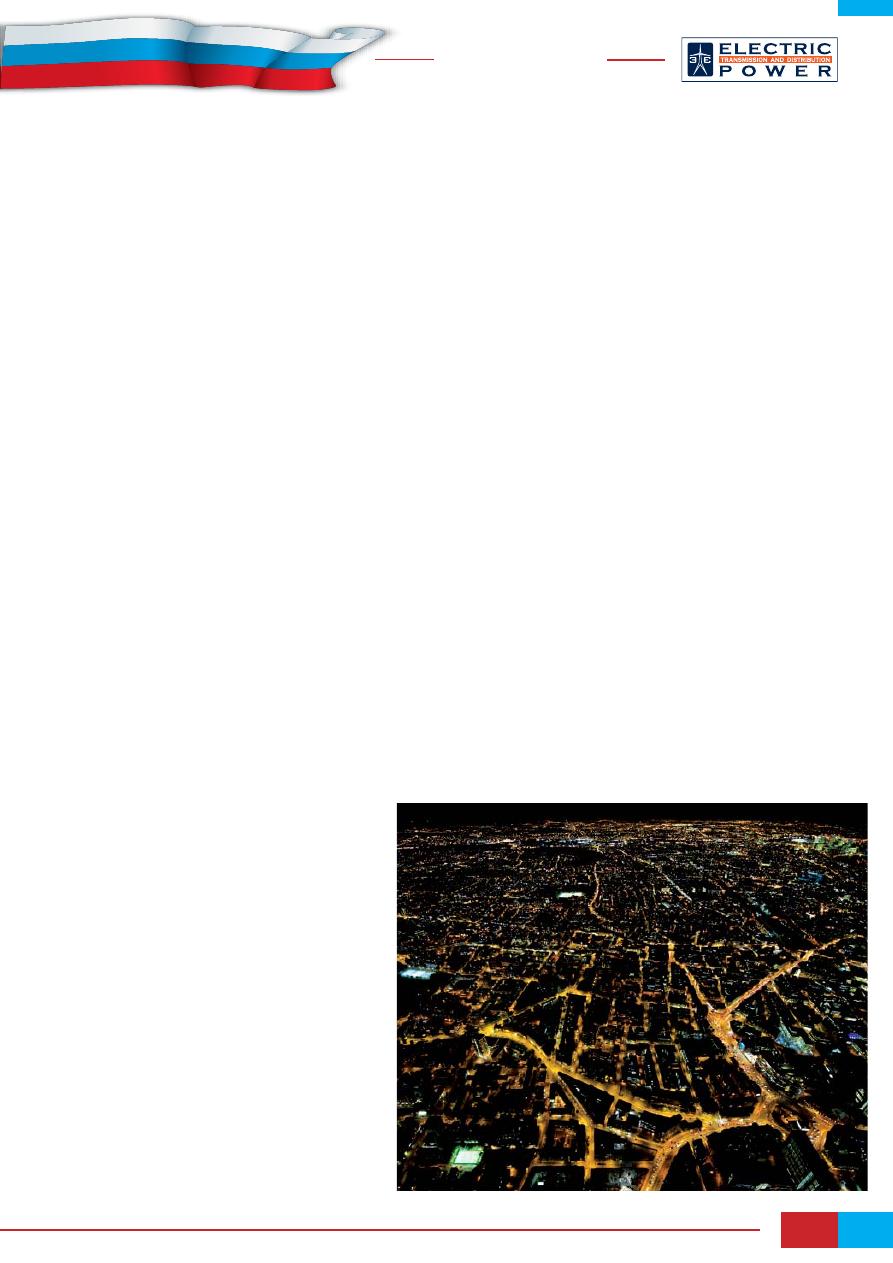
www.eepr.ru
9
In general, the use of power engineering decentralized
management is not something new. Speed requirement
processes in power have always determined the need for
extensive use of local control with overall coordination
through set parameters (settings) and algorithms of auto-
matic devices.
So a relay system with mutual redundancy, automatic
load shedding system and voltage regulation system with
local regulators, etc. were built. In the meantime recon-
fi
guration and local regulator resetting process is related
with long-term analytical tasks and parameterization pro-
cess operations.
This often becomes the cause of power system distur-
bances, but because of a long cycle of adaptation schemes
to operation conditions, network diagram is often far from
optimal in terms of reliability or losses control. Also this fact
can be a critical constraint in the implementation of active
network elements which altering the electrical network pa-
rameters lead to changes in load
fl
ow, short circuit currents,
which require real-time adjusting of local regulators settings.
Creation of an extensive system of centralized adjust-
ment of relay protection and control devices settings faces
a huge informational, process problem; moreover, this ap-
proach is extremely vulnerable to outside interference.
It should be also noted that to adopt appropriate and
sustainable solutions a huge number of technological pa-
rameters characterizing equipment state should be deliv-
ered to the control center, as well as standardization of
information transmitted from objects of different legal
status is needed. This work is extremely time consuming
and costly, and in some expert estimates — impossible in
principle.
An alternative target-oriented approach is the use of a
system adaptive to the on-site management mode logic.
At each of the objects need to update the scheme-mode
model of the adjacent zone, and global coordina-
tion is carried out under coordination of behavior
strategies of individual agents representing the
interests and objectives of the network elements
and objects within the information and physical
interaction through the electrical environment.
By physical interaction is meant a calculated
de
fi
nition of local measurement adjacent objects
state using the current scheme-mode model and
the further implementation of control actions.
Multiagent approach allows a much wider
use of new measurement technologies and facil-
ity management. For example, the use of devices
synchronized phasor measurements in central-
ized systems management requires the transfer of
large data
fl
ow to the control center.
Substation agents can process and use measur-
ing instantaneous values of voltage and current in
full for more accurate recovery of mode dynam-
ics and trajectories of change, sharing with other
facility agent only subscription samples related to
electrical connectivity and mutual in
fl
uence.
MULTIAGENT CONTROL SYSTEM DEVELOPMENT
Currently pilot projects on network intellectualization
are implemented in East and Siberia IPS.
For the energy cluster “Elgaugol” included in East IPS
and elected as one of the
fi
rst “pilot” a multi-agent con-
trol system has been developed, the
fi
rst stage of which is
aimed to realize the function of voltage and reactive pow-
er control. In addition to providing targeted functionality,
this system is intended to demonstrate the possibility of:
• reliable operation of control system at weak ties;
• “zero redesign” of control systems in restructuring of
an energy cluster (in particular, the emergence of new
substations);
• easy integration of various control systems, including
systems of different generations;
• implementation of open source solutions that provide
access to third-party development or modernization of
control systems.
One of the project tasks is to de
fi
ne the zone of ef-
fective and ef
fi
cient sharing of traditional and multi-agent
systems. Multi-agent systems do not fully replace the ex-
isting systems of process control, but supplement them by
automating those activities that used to make operating
personnel and control system support engineers. There-
fore, the pilot multi-agent system was tasked with volt-
age level optimal control of several substations, while the
tasks of operational planning are dealt with at the network
control center. According to expert assessment, ful
fi
llment
of voltage regulation tasks will permit to generate more
accurate requirements for auxiliary systems and subsys-
tems of agent-based environment to ensure the integration
into the existing system of centralized management. From
a hardware perspective the substations are equipped with
redundant head-end equipment with specialized software
running on FIPA standards. It supports standard methods
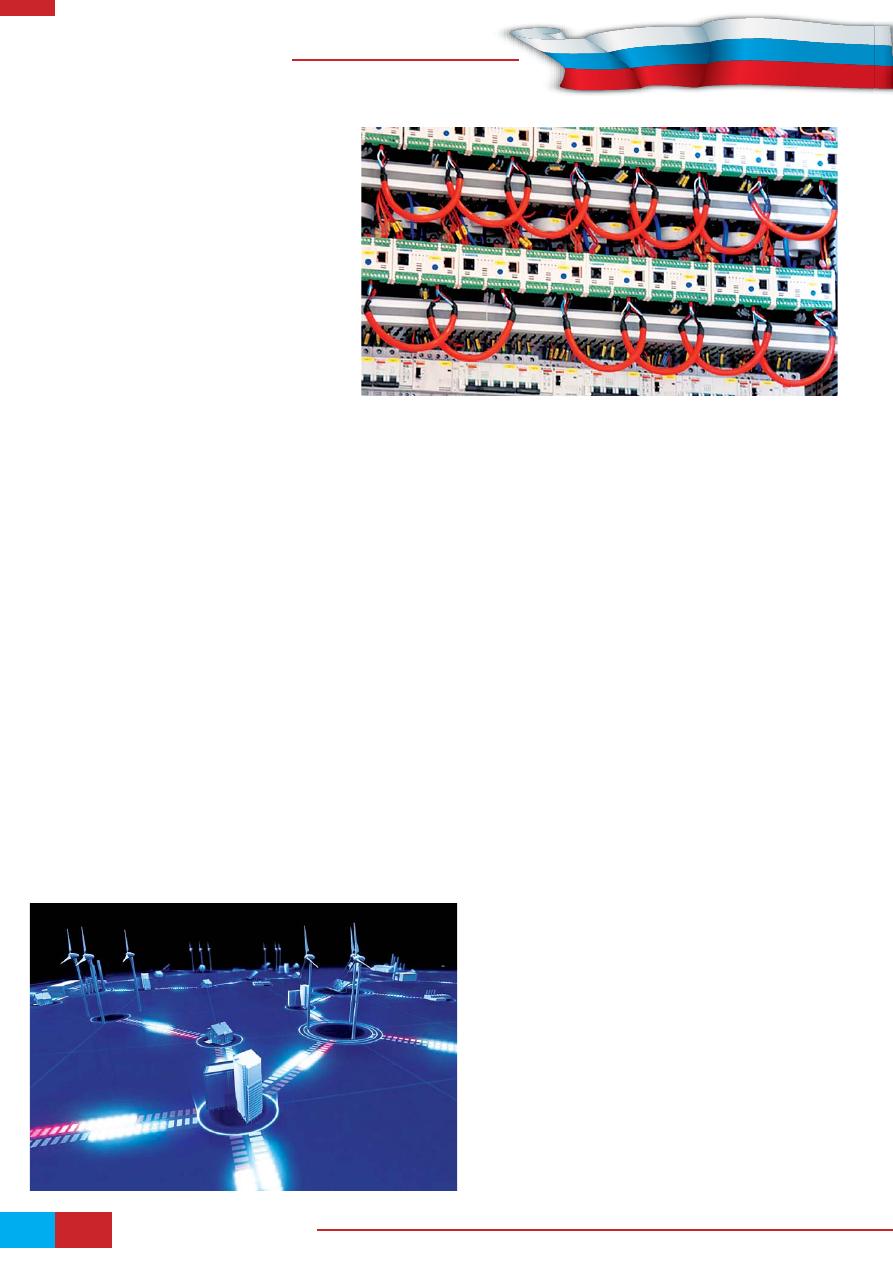
DIGEST, February, 2014
10
Network management
of agent-to-agent interaction, with the co-
ordinator agent agency network, and also
provides access to communication with ex-
ternal systems.
Multi-agent system to interact with ex-
ternal information environment employs the
most common information exchange stand-
ards — Common Information Model CIM,
IEC 60870-5-104 for communication with
control center information systems and IEC
61850 for communication with substations
systems.
Solving the problem of optimal voltage
control substation agents receive from the
network control center ranges within which
they are able to change their voltage sub-
stations. Based on the given ranges, facility modes and
load assessment, admissibility of modes including single
faults on adjacent sites, and based on history of applica-
tion of management strategies and technical status of own
devices, agents form and transmit commands and settings
to automatic control system of (auto) transformer OLTCs
and substation reactive power compensation means.
Today the most actively studied issue is sustainabil-
ity in obtaining optimal solutions from group of agents in
terms of commands execution delays and mode changes,
nonlinearities inherent to electric networks, asynchronous
execution of commands at different objects. To ensure
the stability of the solutions the introduction of addition-
al feedback, selection of optimal behavior of agents and
strategies that currently is one of the basic questions of the
study and to the development and testing of technology
will be required.
Such a control system is planned to develop and test at
JSC FGC SEC ground to the end of the year, and in 2014
providing that the results are satisfactory to evaluate the
implementation at “Elgaugol” power cluster.
FURTHER STEPS
In backbone networks is promising to use multi-agent
voltage control in power supply of abrupt load chang-
ing extended objects, which include electri
fi
ed transport
systems, such as pipelines and railways. Even more sig-
ni
fi
cant is potential of multi-agent approach in the intel-
lectualization of distribution networks, where the factors
that require new approaches to management are expressed
at the most. In particular the possibility to implement the
approach to automate the supply of industrial parks, dis-
tributed generation control, demand and production assets
is under discussion. Due to the integration of companies in
the Russian power grid complex, developments resulting
from the innovative activity of JSC FGC UES can be used
in IDGC projects.
Currently, a reference architecture that will specify the
technical requirements for control systems and interfaces,
interaction, and also form the agent foundation classes is
under development. Polygon, i.e. system to support solu-
tion life cycle for the intelligent network that will provide
researchers and developers with access to knowledge bas-
es, test models, simulations of different control systems is
created. To attract a wide range of researchers and devel-
opers to the aforementioned problems all-russian compe-
tition for innovative projects and developments in the
fi
eld
of smart energy “Energoproryv” started. This contest will
form a community and ecosystem actors capable and in-
terested in the creation of new generation process control
systems.
For all who want to develop and discuss together
these issues Internet sites Grid2030.ru and Gridology.
ru operate. It is worth to note an important task and the
need to create accessible and understandable terms and
de
fi
nitions in the
fi
eld of intellectual energy. This is es-
pecially due to the multi-agent technology and new in-
formation technologies in general, where there are still
no established terms despite the fact that information
technology is steadily stepping in our technological re-
alities.
Implementation of the above initiatives, develop-
ment and implementation of new systems based on
open architectures and multi-agent approach rank high
on the list of medium-and long-term goals of Russian
grid development.
Оригинал статьи: Multiagent technology — a new approach to a common technological infrastructure management
The development strategy for the Unified National Electric Grid (UNEG) approved April 3, 2013, as one of the ways to ensure longterm reliable, quality and affordable energy to consumers, involves creation of a smart energy system with an active-adaptive electric power grid — grid of new generation, customer-oriented and based on multi-agent management principle of operation and development. This approach seems reasonable in terms of the need for a unified technical policy, availability, reliability, efficiency, viability and sustainable development of power systems related to critical infrastructures.




